| Vintage Pulp | Dec 30 2014 |

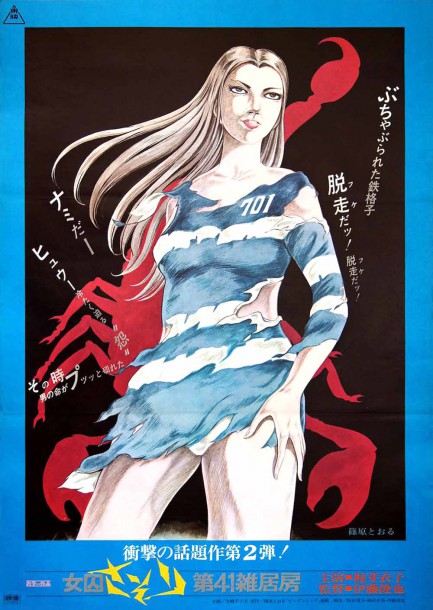
This excellent Toru Shinohara poster promotes the film Joshuu sasori: Dai-41 zakkyo-bô, aka Female Convict Scorpion: Jailhouse 41, starring Meiko Kaji as the female convict of the title. This is second of ten movies dealing with the character of Scorpion, but Kaji played the role only four times before passing it off to Yumi Takagawa in 1976. We shared posters for Kaji’s four excursions back in 2010 and mentioned there was alternate art we didn’t possess. Well, we do now. This was painted by Toru Shinohara, who also created the manga the movies are based upon. It’s a rare piece.
The movie itself is sinister, psychedelic, and extraordinarily stylish thanks to director Shunya Itô’s clever set-ups and shot-framing. For most fans, Kaji is the only Scorpion that matters, and it’s hard to argue otherwise. She’s about five-feet-four and probably didn’t hit triple digits on a scale back then, but with eyes and posture she radiates lethal menace. As far as plot, this fits end-to-end with the previous movie, so consider watching that one first. Female Convict Scorpion: Jailhouse 41 premiered in Japan today in 1972. 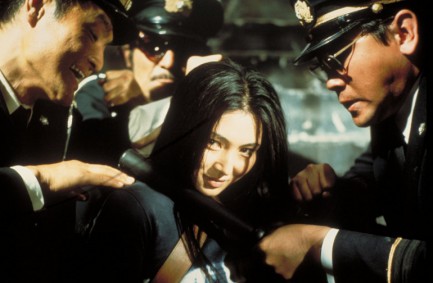
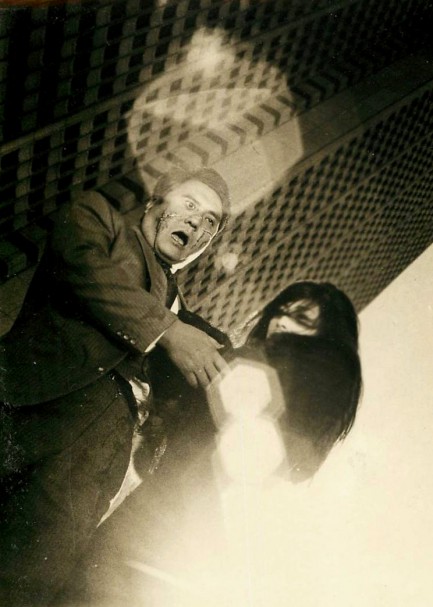
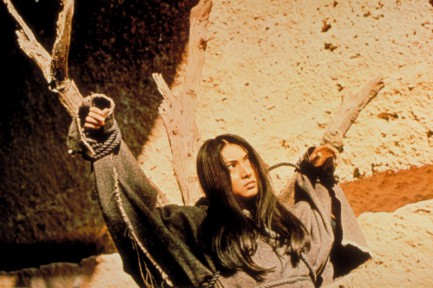
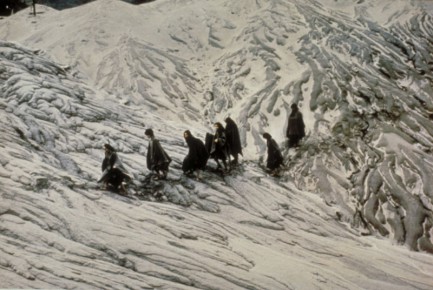
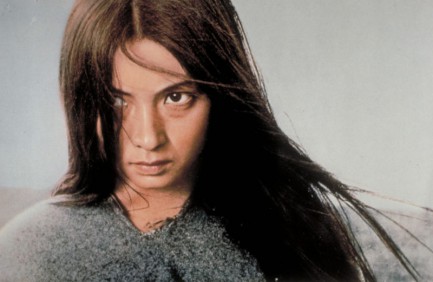
| Vintage Pulp | Dec 1 2014 |

The action drama Shurayuki-hime, aka Lady Snowblood, is considered classic cinema for good reasons—it’s bold, lyirical, and stylish, with an unusual narrative structure and a great star in Meiko Kaji. Every piece of art we have on this game-changing movie appears below, and as far as we can discern much of it has never before been shared online. Shurayuki-hime premiered in Japan today in 1973.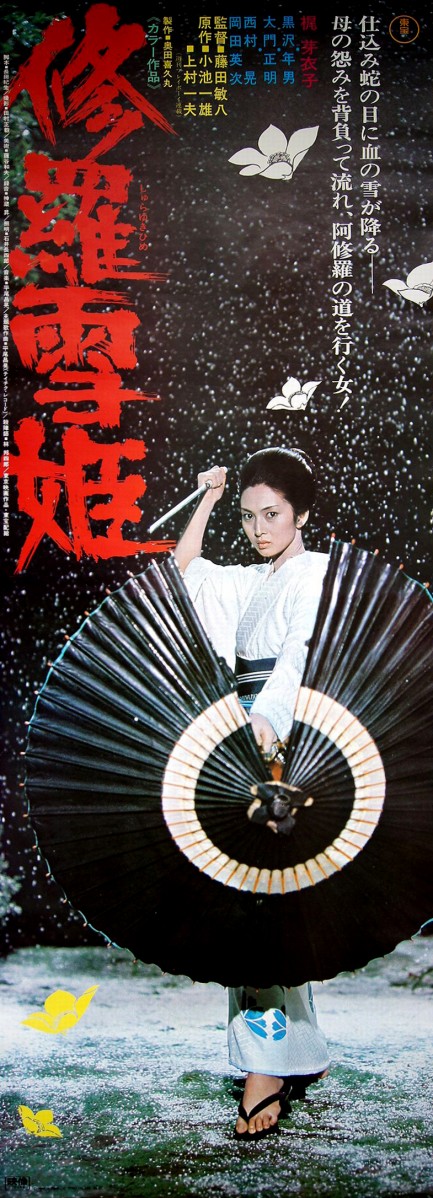
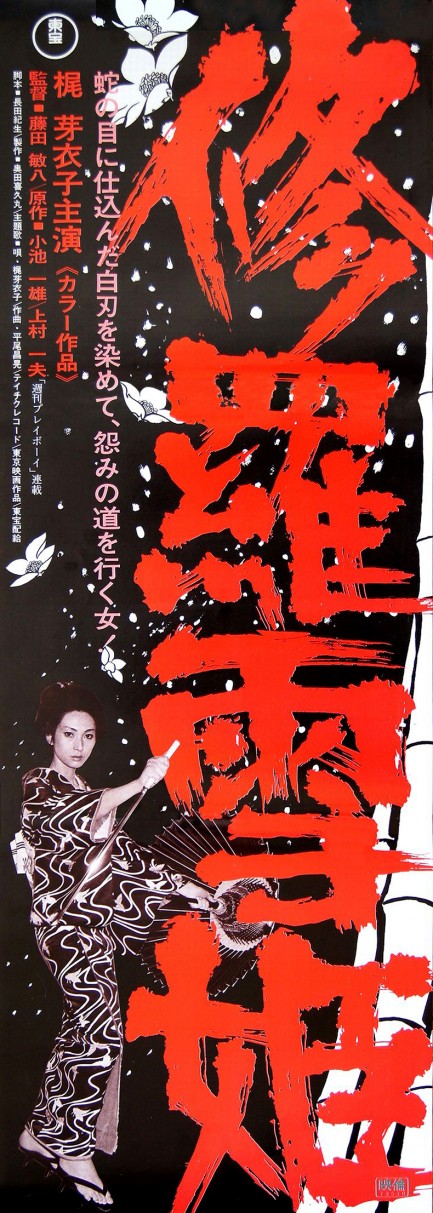
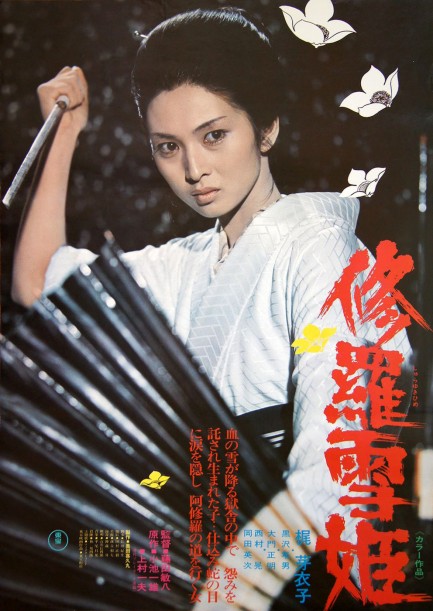
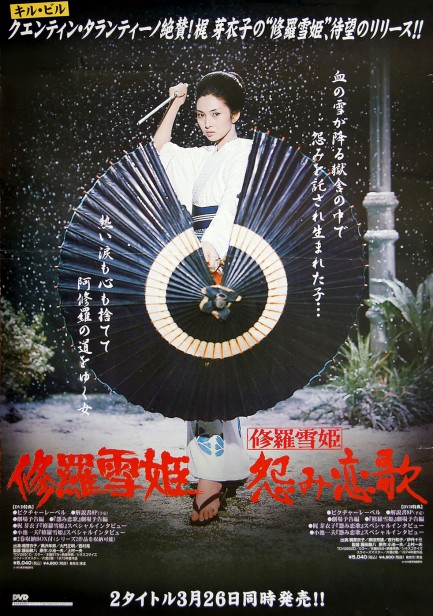
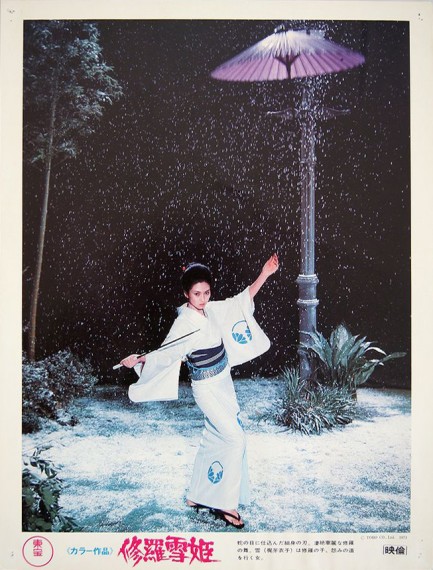
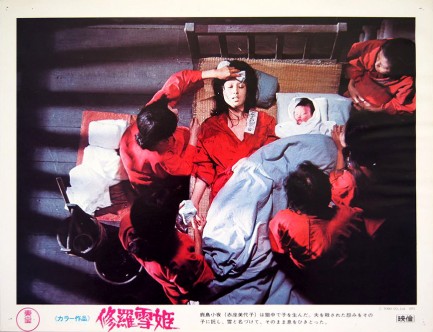
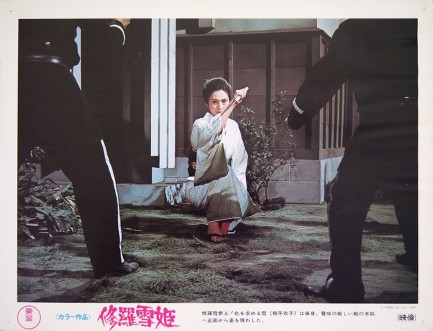
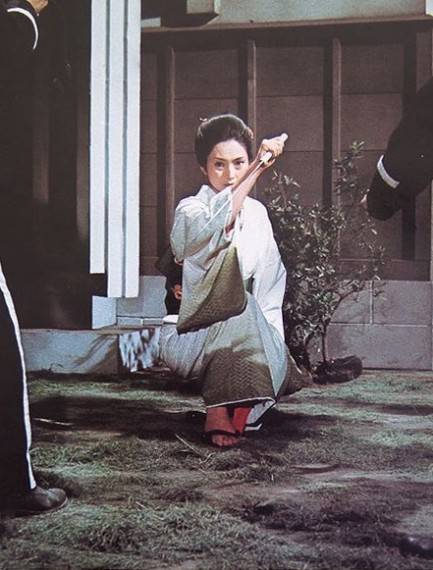
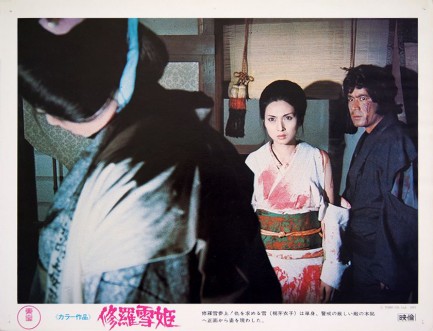
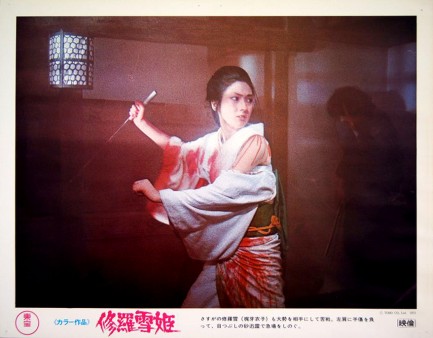
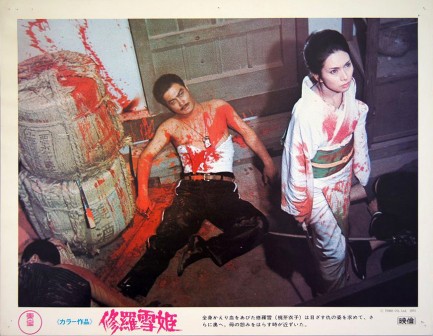
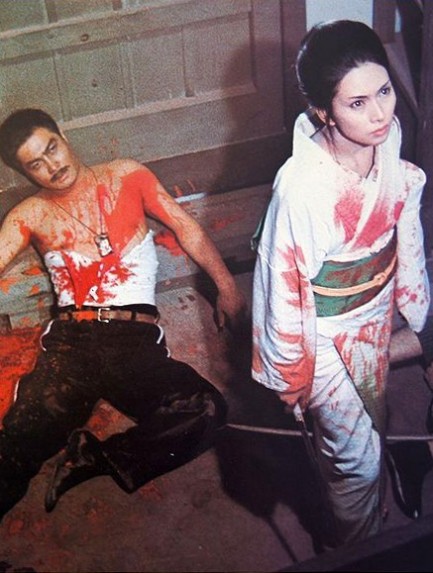
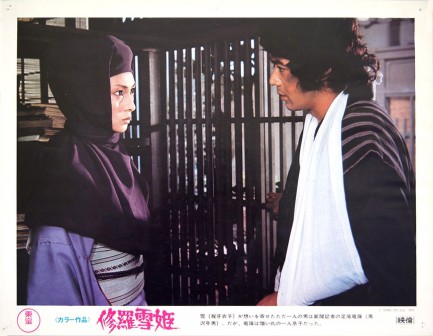
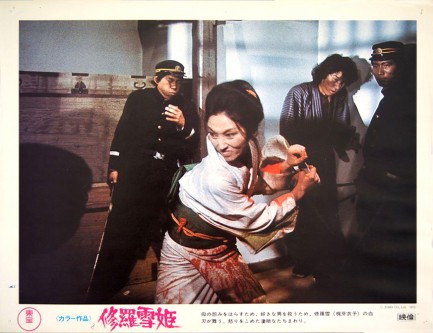
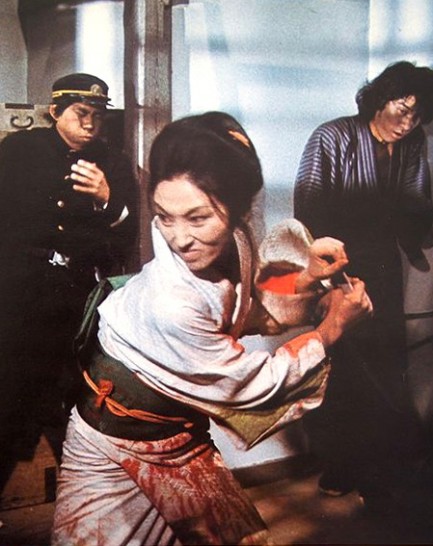
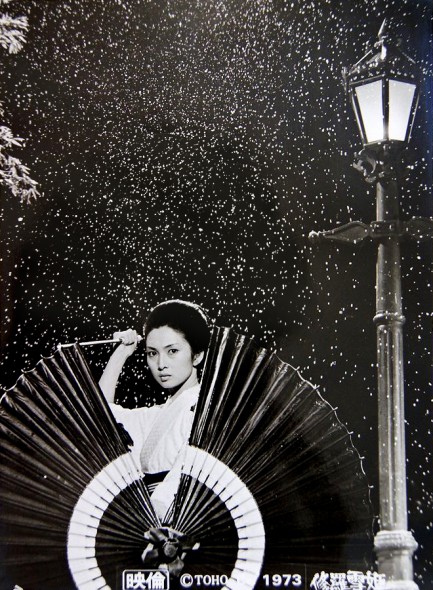
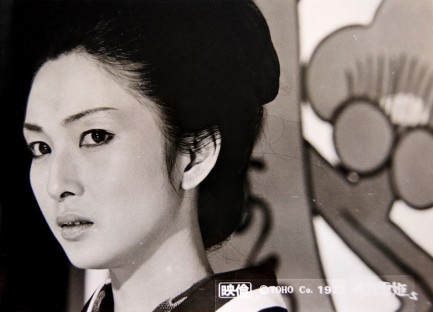
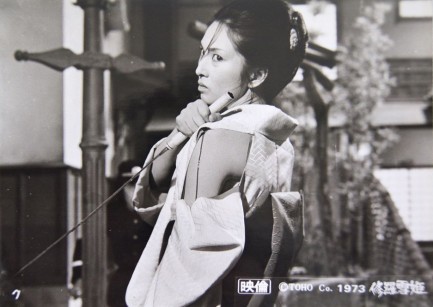
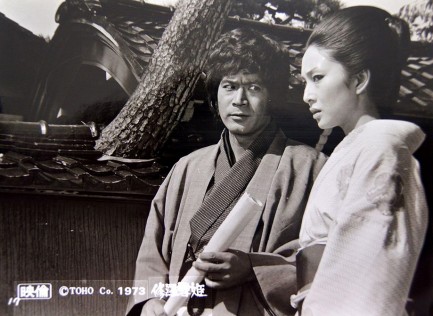
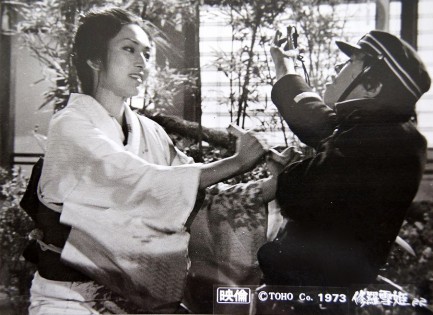
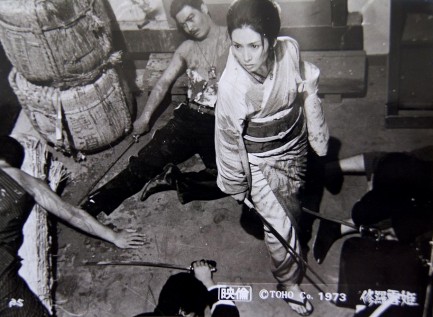
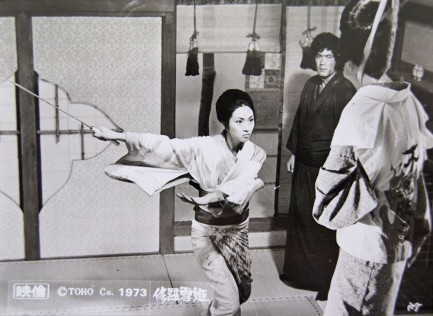
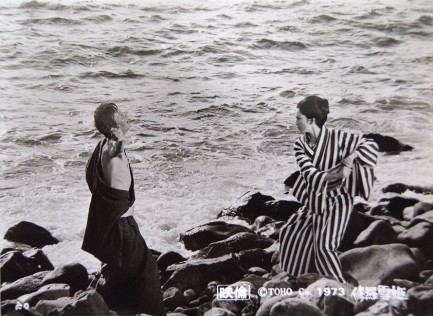
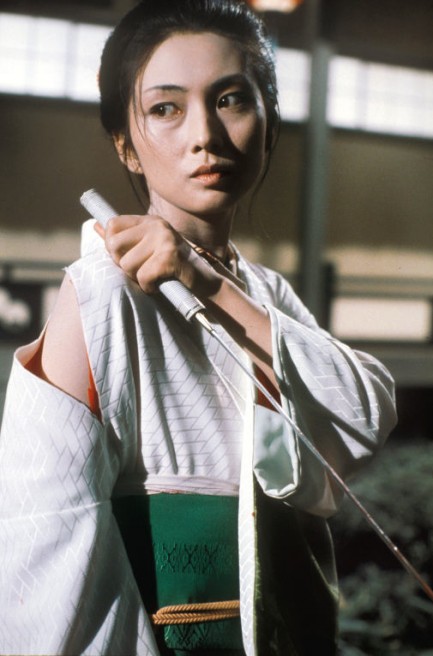
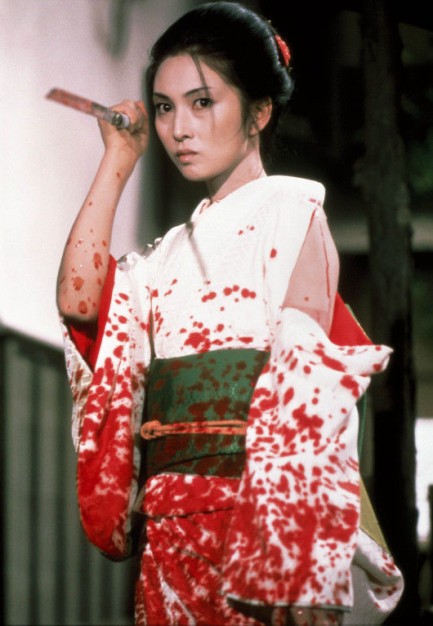
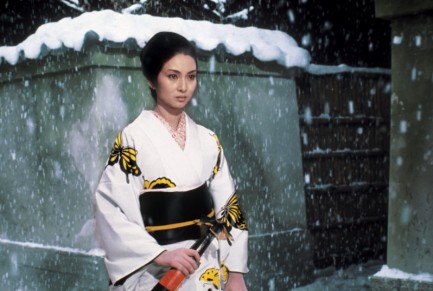
| Vintage Pulp | Nov 22 2014 |

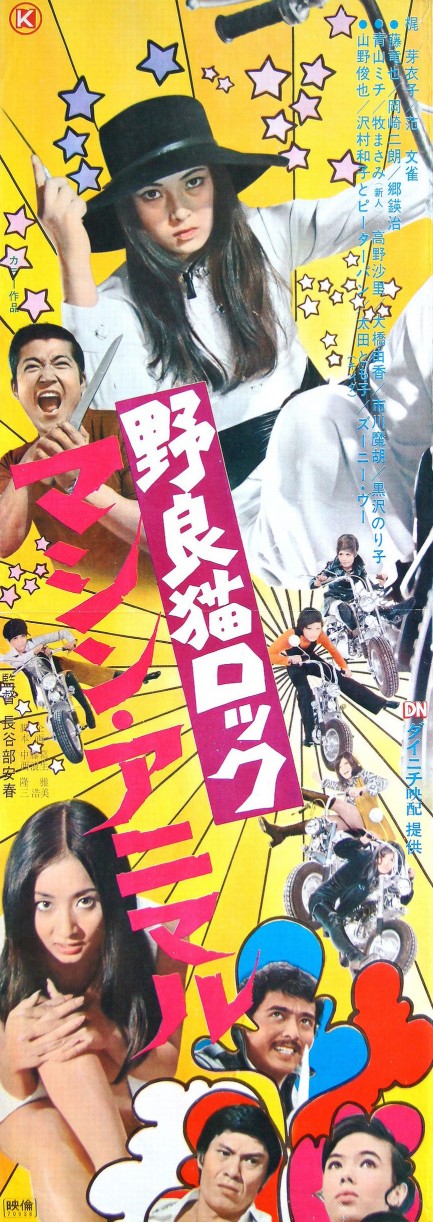
Since we featured Reiko Ike yesterday it seems only right to have Meiko Kaji today. Which of them is the real queen of 70s Japanese action cinema? It’s up for debate. Maybe it’s even someone else entirely. Anyway, you see above and below two posters for Nora-neko rokku: Mashin animaru, known in English as Stray Cat Rock: Machine Animal. It was the fourth of five Stray Cat Rock films, and Kaji starred in all, though as different characters in each.
The series is about juvenile delinquency and takes place against a backdrop of industrial cityscapes and inside the sorts of groovy nightclubs you might associate with Austin Powers. The plot involves Kaji and her cohorts planning to sell stolen LSD in order to help a soldier escape the Vietnam War, but getting entangled with rival gangsters who want to horn in on the deal. It’s very much worth a viewing, and stacks up well against the previous entries. Wild stray cat—you’re a real gone girl. Nora-neko okku: Mashin animaru premiered in Japan today in 1970.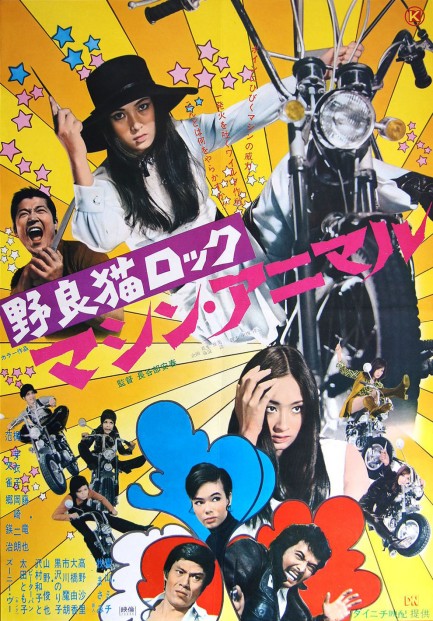
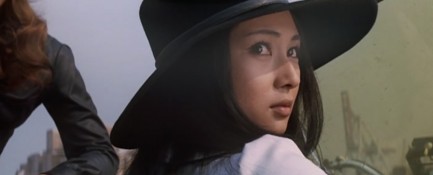
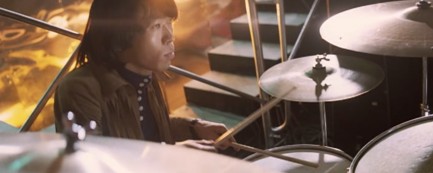
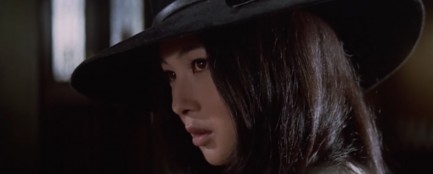
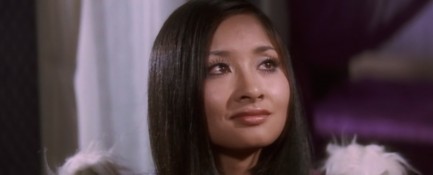

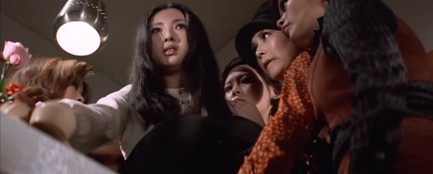
| Vintage Pulp | Nov 17 2014 |

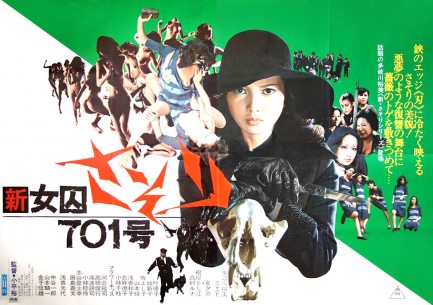
This poster for Shin joshuu sasori: 701-gô, aka New Female Prisoner Scorpion: 701 promotes the first film in what today might be called a franchise reboot. Meiko Kaji established the character of Prisoner 701 in four hit films, and a few years after she left Toei Company decided to resurrect the series with Yumi Takigawa in the lead. Framed for murder, she ends up in a women’s prison where she’s harassed, sexually assaulted, and marked for death. A prison riot finally gives her the chance at revenge, and let's just say she takes full advantage.
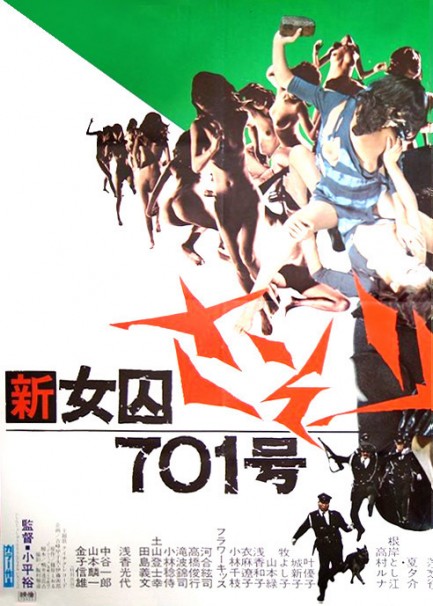
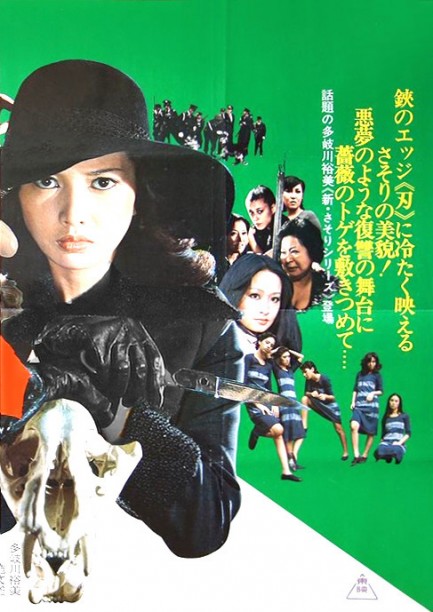
| Femmes Fatales | Sep 28 2013 |

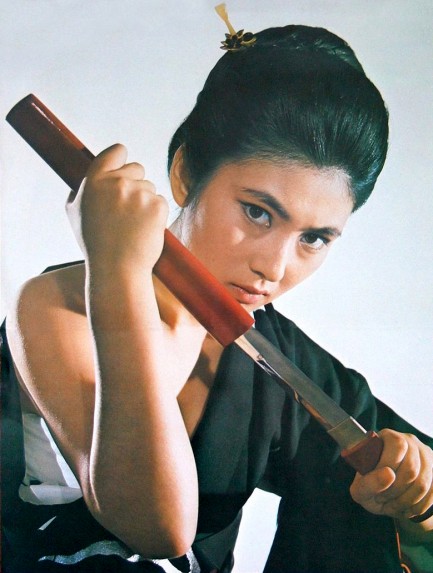
When pondering which femme fatale to post today, looking toward Japan seemed fitting. Japan’s Cinema Caravan will have its finale in San Sebastian tonight with several short films, plus live music from Cro-Magnon, DJ Mitsu the Beats, and more. The above image has never appeared on the internet before, as far as we can tell, and shows legendary actress Meiko Kaji. The year on this is 1969, back when she was still quite well known as Masako Ôta, having acted in numerous movies using that name. We grabbed it from the poster below, which was made by her employers Nikkatsu Studios to inform the Japanese public of her name change. The text describes her as "reborn," and she was, because her career really took off after her rebranding. We'll have plenty more from Kaji down the line, and we’ll tell you all about Cinema Caravan’s finale tomorrow. Next week we’ll get back to our usual books, tabloids, and general pulp weirdness.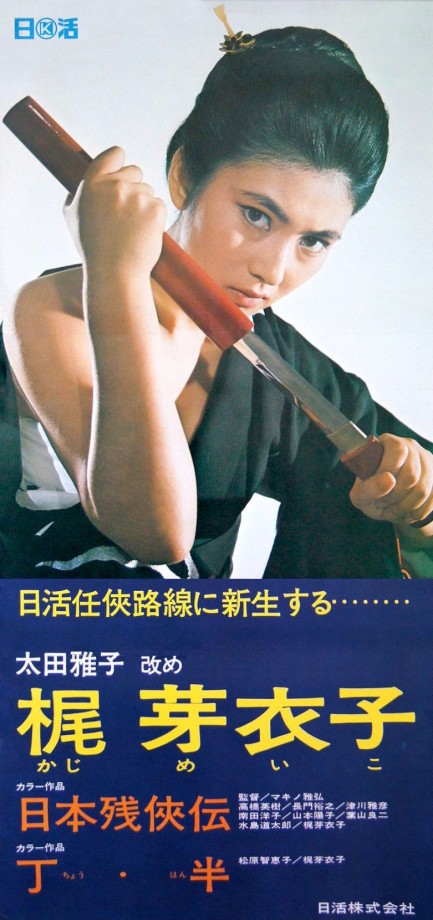
| Musiquarium | Mar 1 2013 |

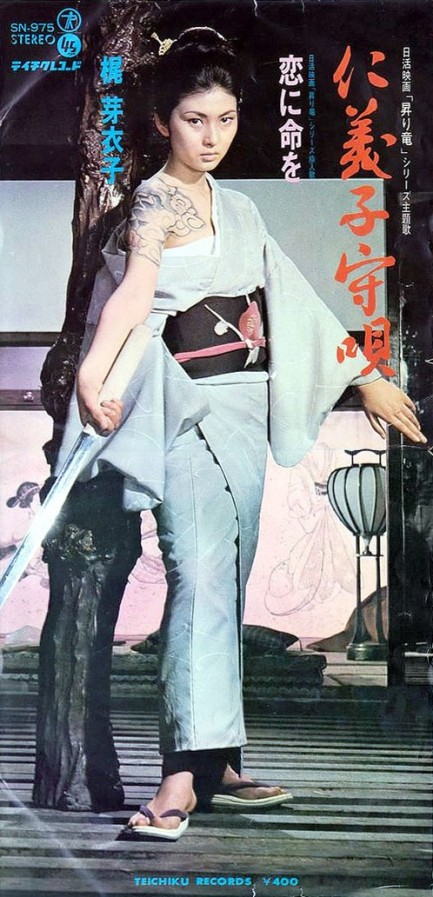
When we saw this 7-inch gatefold over at Harakiri Chamber scanned and posted in two pieces we couldn’t resist Photoshopping it into one. It’s got Meiko Kaji, and if you’ve watched her movies you know it was her enemies who wound up in two pieces, not her. Anyway, Kaji is attired here for her role as Akemi Tachibana in Kaidan nobori ryu, aka The Tattooed Swordswoman. We took a close look at that movie back in October. You get two Kaji songs here—the a-side “Jingi Komoriuta,” which was featured on the soundtracks of Kaidan nobori ryu as well as 1971’s Ginchô wataridori, and the b-side, which is entitled “Koi ni Inochi wo.” This 1970 pressing is very rare and costs the equivalent of $100, which is quite a sum to drop on two tunes. But if you’re curious you can listen to the first one here and the second one here.
| Vintage Pulp | Feb 19 2013 |

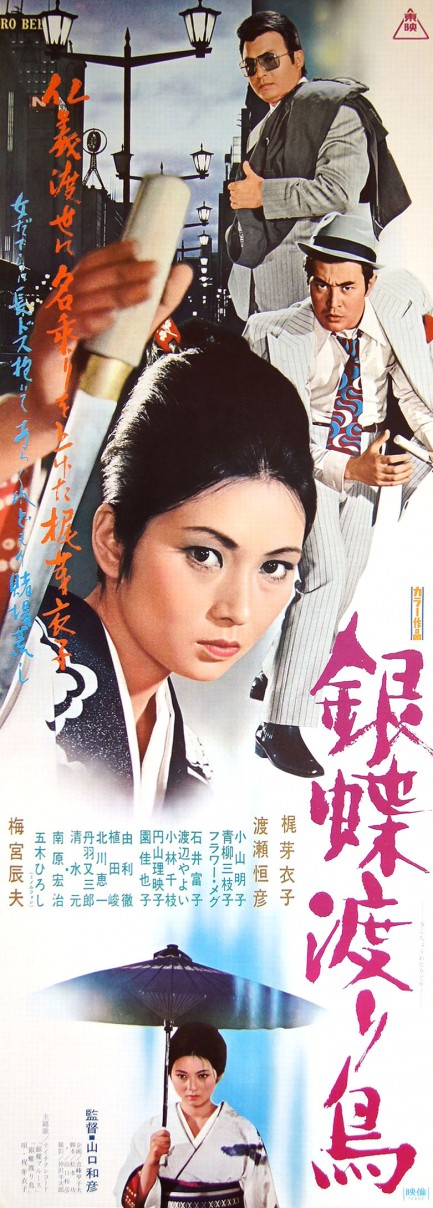
It’s been a while since we had any Meiko Kaji on the site, so today we have four posters—two normal sized and two panel length—for 1971’s Ginchô wataridori, aka Wandering Ginza Butterfly, and 1972’s Ginchô nagaremono mesuneko bakuchi, aka Wandering Ginza: She-Cat Gambler. Haven’t seen them? Well, in our opinion, part two is vastly better than the first installment, but neither is up to the standard of Lady Snowblood. Still though, there are Yakuza and she kills them. What more could you want? You also get Meg Flower in part one, and Sonny Chiba in part two—both good additions. Kaji is still going strong in show business, by the way, having appeared in nine episodes of the Japanese television series Kekkon Shinai in 2012. We have some extremely rare posters of hers we’ll get to shortly.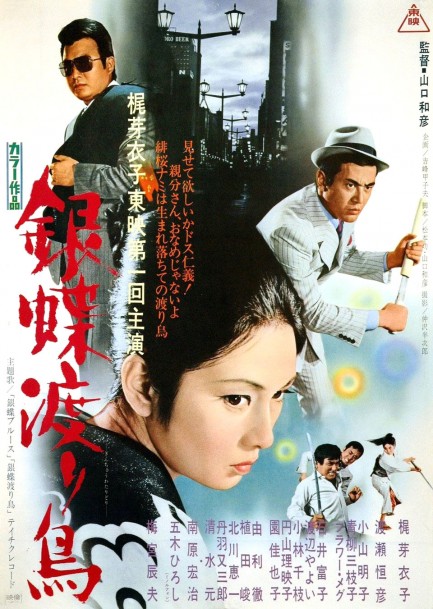
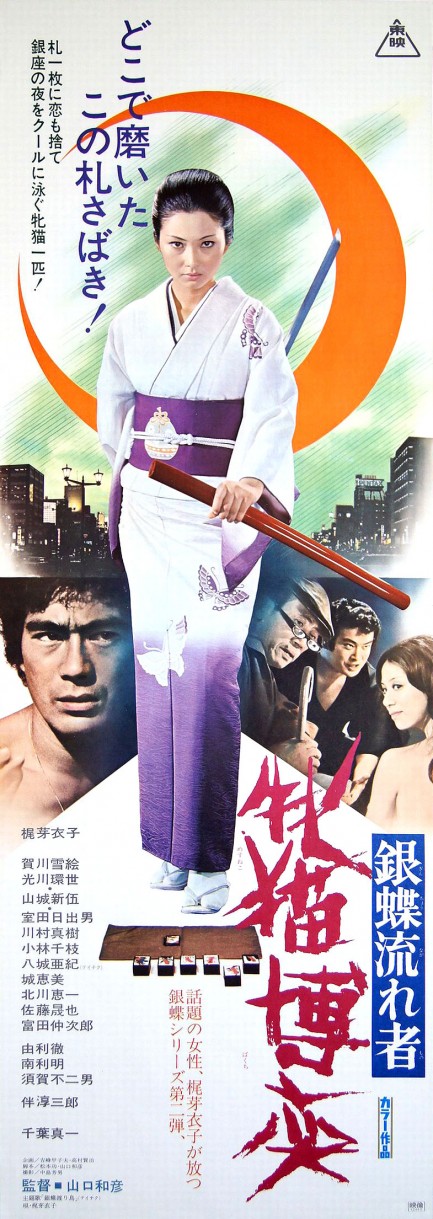
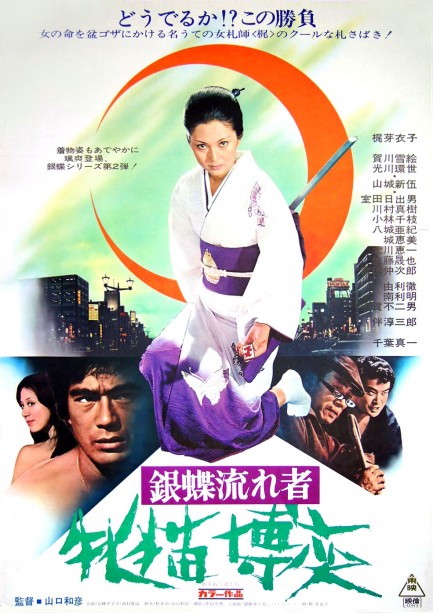
| Intl. Notebook | Oct 8 2012 |

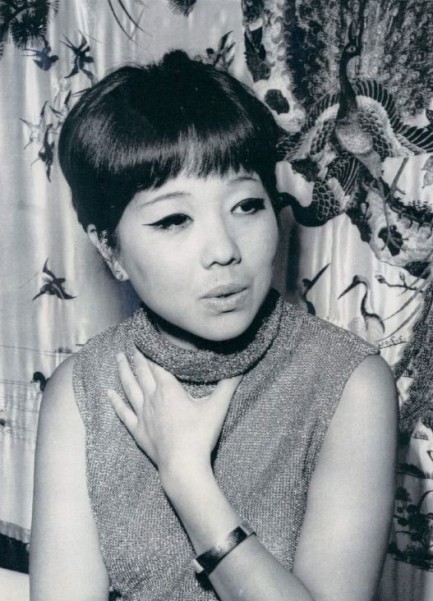
Last week we watched Meiko Kaji’s Kaidan nobori ryu, aka Blind Woman’s Curse, and were too busy being cute with our summary of the film to mention that the blind woman was played by Hiroko (Hoki) Tokuda, who is better known to many people as author Henry Miller’s last wife. When they met she was working as a lounge pianist in L.A. and Miller, who had established himself as one of the most important American writers ever, was living in Pacific Palisades.
Tokuda told the New York Times in 2011: “Henry started asking every week to meet me. I realized he just wanted a Japanese woman to add to his collection, and I would always ask myself, ‘Why me?’ Soon after we met, he started telling people he was going to marry me.” And marry her he did in September 1967. She was twenty-nine and Miller, who had been born in 1891, was on the verge of turning seventy-six.
 and has even joked about him being a bad kisser. "Terrible," she describes it. "Wet."
and has even joked about him being a bad kisser. "Terrible," she describes it. "Wet."| Vintage Pulp | Oct 4 2012 |

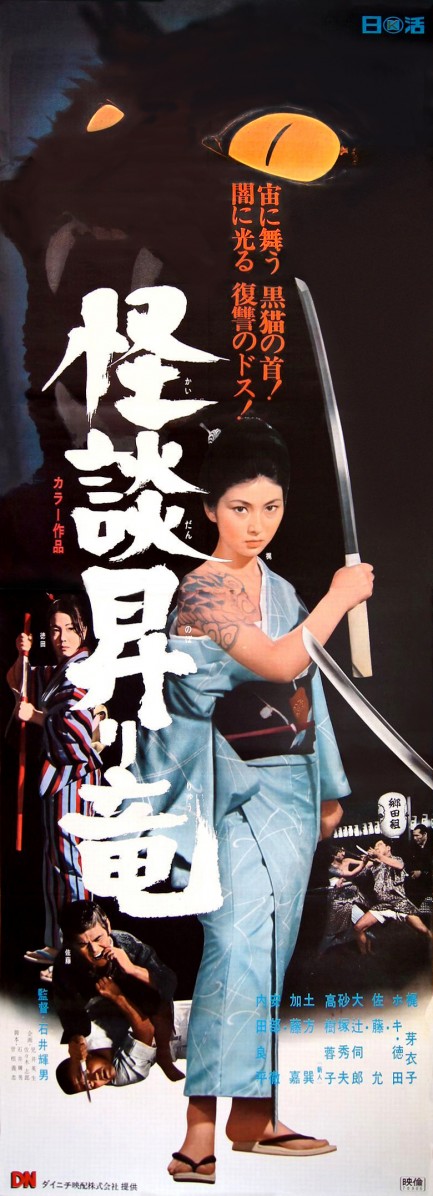
We thought the last Meiko Kaji poster we found featured the creepiest black cat of all time. We stand corrected. The above poster is for Teruo Ishii’s 1970 blood splatterer Kaidan nobori ryu, aka The Tattooed Swordswoman, aka Black Cat’s Revenge, aka Blind Woman’s Curse, aka Strange Tales of Dragon Tattoo, aka we’ll just stop there and tell you what it’s about. It’s about… well, we aren’t completely sure what it’s about, because we had to watch it without subtitles. Sometimes that doesn’t matter, but this movie is a bit abstract so the plot was hard to follow. Actually, even the actors seemed confused at times. But even if we can’t tell you exactly what it’s about, we can tell you what it has.
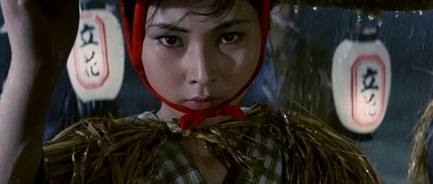
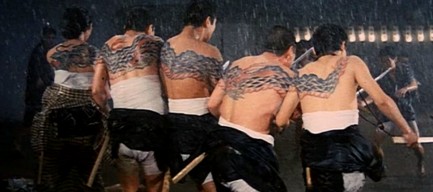
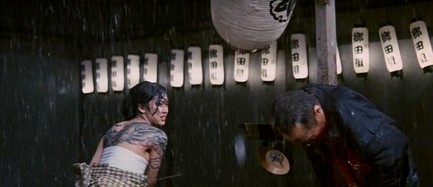
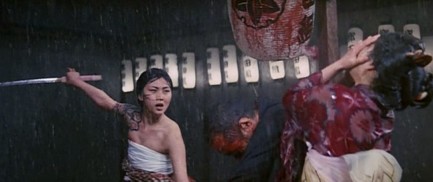
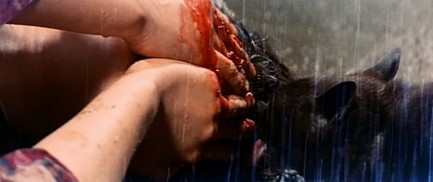
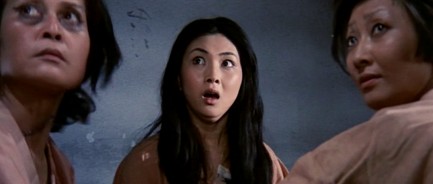
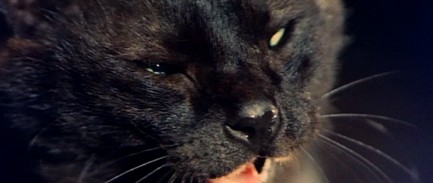
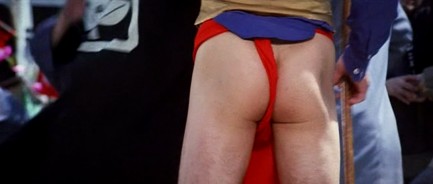
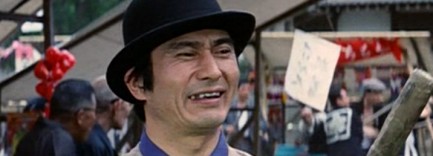
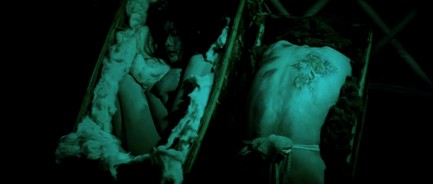
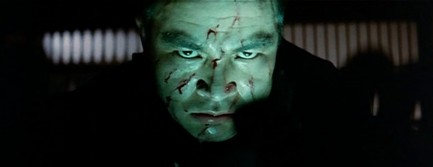
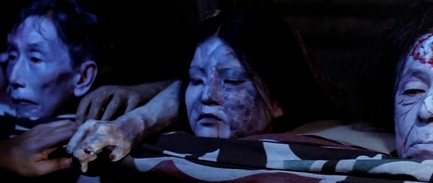
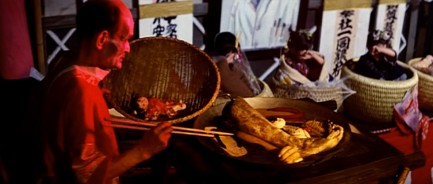
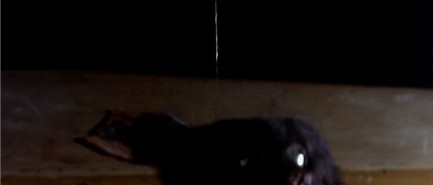
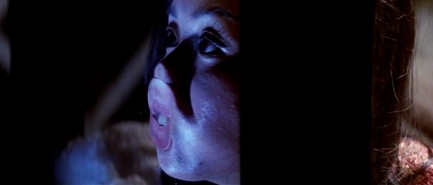
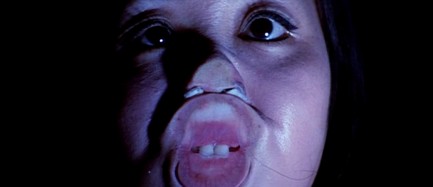
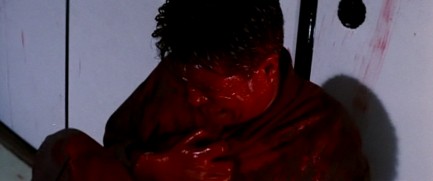
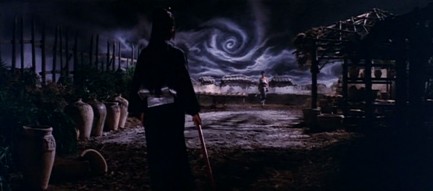
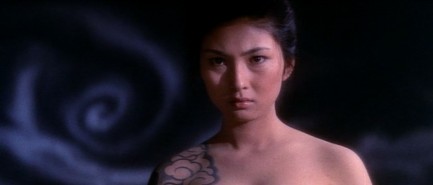
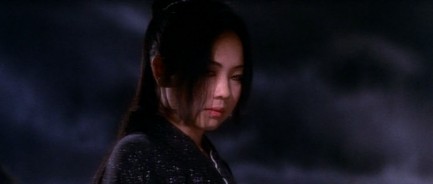
And that’s all we’ve got, because with virtually zero command of Japanese the plot nuances are beyond us, especially the whole haunting and evil spirit thing. But when a movie looks this good, it’s easy to enjoy even without total (or even partial) comprehension. Hopefully we’ll find a subtitled version somewhere and get a chance to screen this epic again. But even if we don’t, it was time well spent.
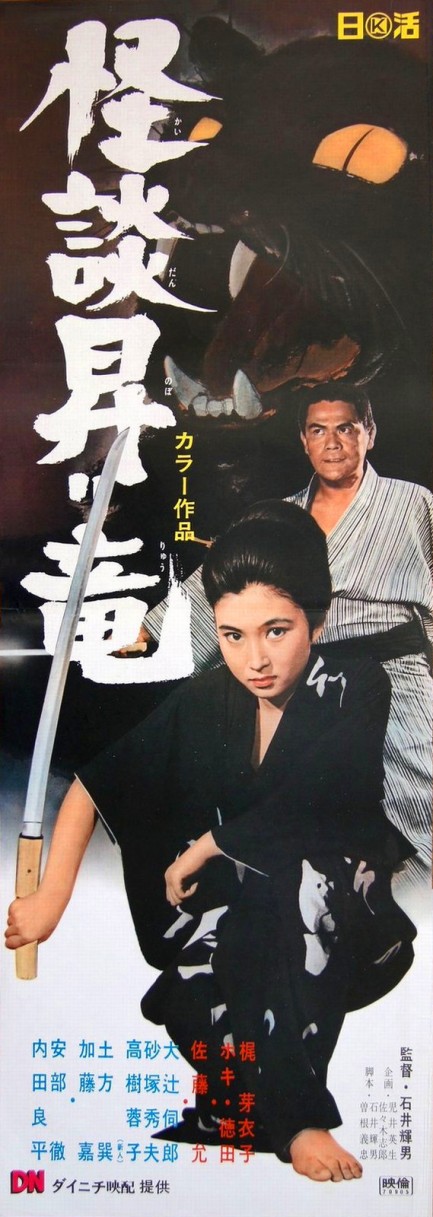
| Vintage Pulp | Sep 20 2012 |

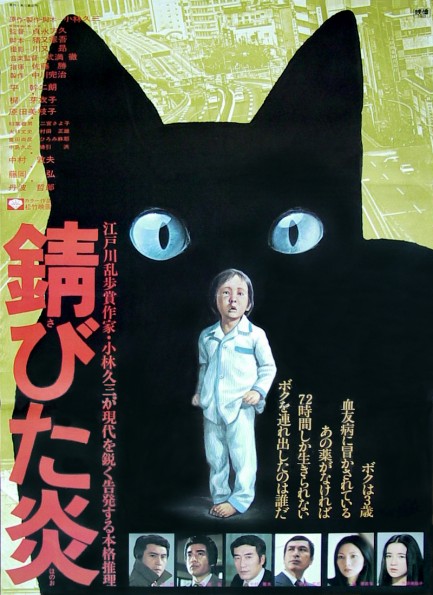
This will finish up our Japanese pulp for the moment. It’s a poster for a Meiko Kaji film we’d never heard of before called Rusted Flame, according to the writing at left. Though an entry for it doesn’t appear on the usually comprehensive IMDB, nor on Japanese Wikipedia, the film does exist. We found more than one Japanese blog entry on it explaining that it appeared in 1977, also stars Mikijiro Hiro and Meiko Harada, and is a mystery revolving around the kidnapping of child hemophiliacs. We saw nothing about how the giant black cat fits in, but if the tableau above is an indication there’s some seriously bad luck involved. Another thing we did not see anywhere we looked was the poster. So we’ll take credit for getting this online for the first time.
 |
 |




































































